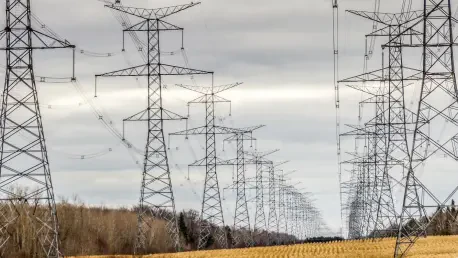Picture this: a future where electricity flows more freely across the nation, not because of massive new construction projects, but due to the dynamic adjustments in grid capacity harnessed from real-time weather data. This compelling transformation unfolds under Order 881 by the Federal Energy Regulatory Commission (FERC), promising innovative management of transmission systems.
Bridging the Gap in Electrical Grid Capacity
The United States faces significant challenges in meeting escalating energy demands, coupled with mounting interconnection backlogs hindering renewable energy deployment. Order 881 emerges as a timely solution to these pressing issues, enabling transmission operators to integrate Ambient-Adjusted Ratings (AARs) into infrastructure management. This shift not only enhances grid reliability but boosts efficiency by exploiting existing infrastructure capabilities.
AARs: An Infrastructure Game Changer
AARs represent a revolutionary method of line rating adjustments, aligning transmission capacity with ambient weather conditions in real time. This approach demands engaged participation from both Independent System Operators (ISOs) and Transmission Owners (TOs), marking a substantial shift from typical regulatory frameworks. Key to this transformation is the seamless exchange of information and robust data handling, ensuring precise operational forecasts.
Challenges in Implementing Order 881
Experts echo the sentiment that Order 881’s technical and organizational hurdles require careful navigation. The complexities associated with deploying advanced rating tools, harmonizing data exchanges, and maintaining security protocols necessitate comprehensive planning. Projects like LF Energy’s TROLIE are pivotal in standardizing these processes, fostering easier adoption and streamlining interoperability among diverse stakeholders.
Charting Implementation Routes for Utilities
Utilities across the nation face the task of effectively incorporating AAR-driven systems. Embracing innovative forecasting software, enhancing collaborative data exchanges, and adhering to regulatory compliance guidelines constitute vital steps forward. Open-source frameworks, such as TROLIE, empower these transitions, reducing barriers and fostering cooperation between utilities, vendors, and regulators—essential for successful implementation.
Order 881 signifies a groundbreaking shift in grid management strategy, positioning utilities to harness existing infrastructure capabilities dynamically. While obstacles remain, communal efforts grounded in collaborative solutions point toward a future marked by increased efficiency and reliability in energy distribution. With collective action, stakeholders can transform this vision into reality, advancing the nation’s grid management into a new era.









